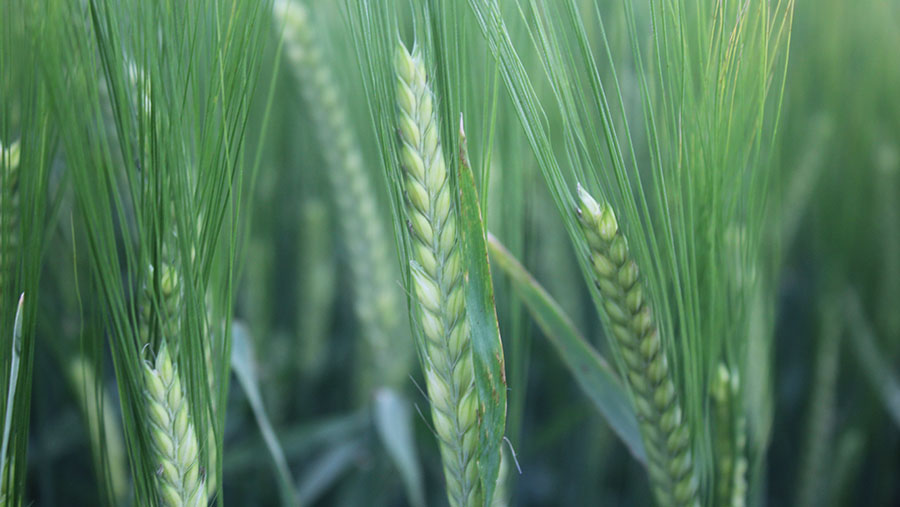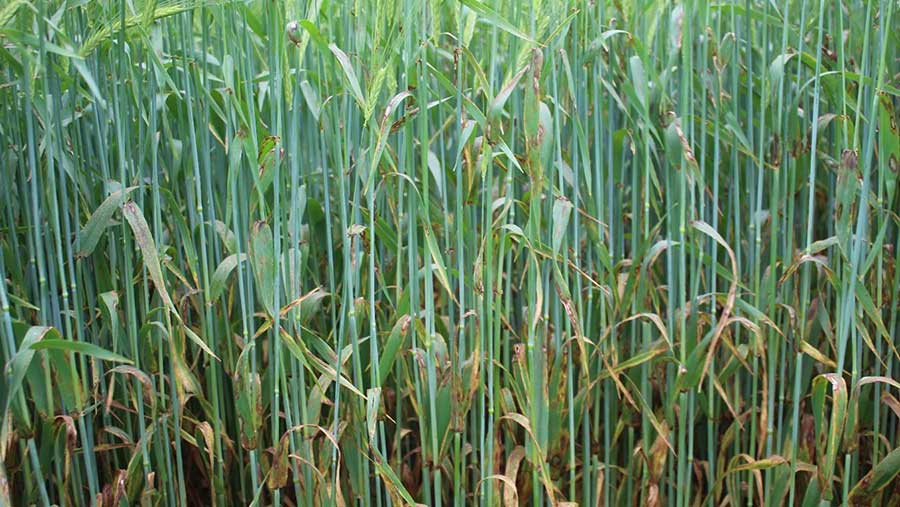Advertiser content
Growing barley to potential: A grower’s approach

© BASF
It’s all in the detail when it comes to growing spring barley as Peter and Grace Chapman know.Twice winners of gold in the Yield Enhancement Network’s (YEN) competition for acheiving the best percentage of yield potential, they understand how to get the best out of the crop on their farm of South Redbog, near Strichen in Aberdeenshire.
Their business is predominantly arable, with 350 ha of 420 ha, in a rotation of winter barley, winter oilseed rape, winter wheat and two years of spring barley. Like the rest of the country, it has been a very wet winter in Aberdeenshire.
“It is going to take a while for the ground to dry out this spring,” said Peter.
“Soils at South Redbog are sandy clay loams with 25 – 30 cm of topsoil over a clay subsoil with thousands of metres of field drains and generally they are pretty wet. Getting crops off to a good start is fundamental, and particularly so for spring barley, to enable it to fulfil its potential.
We will just have to wait until the conditions are right to get on to the fields because we want the seed to emerge quickly and evenly and for the crop to grow unimpeded. Spring barley needs to start tillering within weeks of emergence, so if you have a crop that is being slowed down by poor drilling conditions it is going to have a challenge to achieve its full potential.
We have invested in modern machinery and this gives us both the flexibility and capacity to be patient and get the crop in when there is a weather window.”

© BASF
This year Peter and Grace will be growing LG Mermaid and Skyway for feed, with varieties chosen on their agronomic attributes and yield potential. “We always target maximum yield and good quality grain, so we grow varieties that will give us a decent bushel weight, even if these varieties are a couple of percentage points lower in yield.
Our ground is very fertile because of all the muck it has had over the yearsfrom previous enterprises, so we don’t produce low N barley for malting. Skyway is a new variety for us, but we grew LG Mermaid last year and it did well,” said Peter.
In preparation for the spring barley crop, fields are ploughed and pressed, before being drilled with a power harrow combination.
“This year our seed rate will be 400 seed/m2. The growing period is short and spring barley doesn’t have much time to tiller, so its important to put enough seeds in the ground at the outset as tiller number is key to achieving high yields in barley, to create as many ears as we can,” said Peter.
Crop nutrition at South Redbog is based around organic manures which have been applied annually over the last 30 years, building fertility and the organic matter content of the soil, which is between 7 and 9 %. The use of organic manures also improves soil structure and the aeration.
“We run a 50 cow suckler herd here and buy in 3000t of local compost to cover our needs. Soil indices of P + K are moderate to high, and the organic material provides all the P and K that we need for spring barley.
We do put some phosphate and nitrogen down the drill spouts, 16:16:0, as we need to get the crop up and going and phosphate helps get the roots formed, it really is crucial when establishing a spring barley crop this far north. If rooting is reduced there can be a knock-on impact for the uptake of other nutrients from the soil.”
Tissue testing identified copper deficiency, whilst manganese deficiency has always been an issue at South Redbog. Spring cereals are more susceptible to both manganese and copper deficiencies as their root structure is not as well developed as that of winter cereals, particularly if drought conditions prevail.
“Manganese and copper are applied twice in the growing season, at GS 13-21 and GS 30-31, and magnesium, which is essential in the formation of chlorophyll, is applied towards the end of the growing season to aid grain fill,“ said Peter.
Manganese deficiency is one of the most widespread trace element deficiencies in barley. Risk factors can include deficient soils and low availability and this can be exacerbated by poor soil conditions like low soil temperature and loose seedbeds. Shrivelled grains are symptomatic of copper deficiency.
Spring barley crops drilled in April tend to rattle through their growth stages and crops are likely to be more sensitive to stress.
At South Redbog, Peter is appreciative of the role PGRs play in the agronomy of the spring barley crop, helping to prevent lodging and improving rooting and establishment. “Our fertile soils mean crops can be lush and Medax® Max (prohexadione-calcium + trinexapac- ethyl) keeps them standing.
We have also found it to be a product that doesn’t stress the crop, even in a dry season, which in turn helps with managing Ramularia.”
When it comes to the fungicide programme Rhynchosporium, net blotch and Ramularia are the main considerations in Aberdeenshire and the strategy with fungicides is to be preventative.
“We will always use a two spray programme on spring barley, and depending how the season plays out, we will vary the rates accordingly. A programmed approach is best for disease control, with early control allowing tillers to be retained.
Our final fungicides are based on Revystar® XE (Revysol® + Xemium®). We aim to keep the stress on the crop to a minimum with disease control and the correct nutrition to delay the onset of Ramularia,” said Peter.

© BASF
David Leahy, Business Development Manager BASF, said, “Peter’s agronomic decision making for yield and quality helps manage crop stress in his spring barley crop, which will help manage Ramularia. Fungicides containing Revysol®, the best active ingredient (a.i.) for Ramularia on the AHDB Fungicide curves, are a key component of that. Good Ramularia control also leads to reduced levels of straw breakdown.”
After harvest, all the straw is baled and what they don’t use for the cattle is sold, as there is a ready market.
“Revystar® XE also brings a double benefit from the Xemium® component. If Rhynchosporium is still a threat then Xemium® is the best a.i. to control that, plus later in the season, where we do sometimes see straw breakdown leading to brackling, Xemium® is the best active ingredient for protecting against straw breakdown,” said David.
Provided by
BASF offers renowned and innovative fungicides, herbicides, insecticides and growth regulators for agriculture. Our products and services help farmers increase their yields and optimize the quality of their products.
